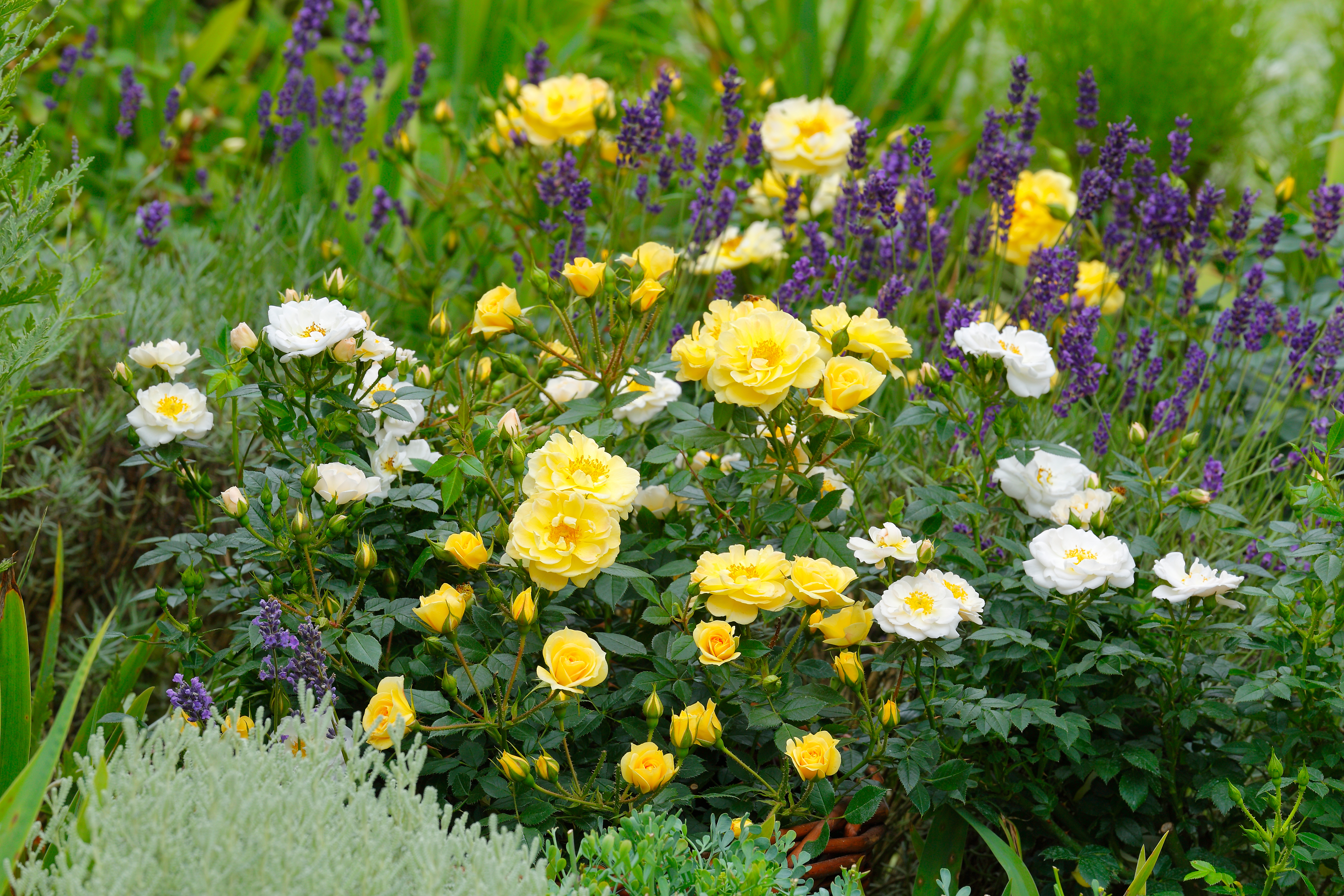 Roses are sun-loving creatures.
Roses are sun-loving creatures.
Well ventilated locations allow the leaves to dry quickly in the morning and after rainfall.
As a result, the leaves are less prone to fungal pests such as downy mildew, powdery mildew and rose rust.
Optimal rose soil is loose, well aerated, rich in humus and nutrients, and well-drained.
Roses do not like waterlogging.
The ideal ph value is 5.5 to 6.5.
Short soil studies:
The ideal soil is dark (humus content), slightly muddy (clay content) with coarse sand grains. When wet, slightly lumpy.
Sandy soil is light, bright and consists of coarse, visible sand grains. This soil should be enriched with humus (compost). Betonite (small clay balls from the gardening store) increased the water retention capacity.
Heavy soil is greasy, shiny and can be formed into balls. Due to the high clay content, it becomes hard as a rock when it dries. An improvement can be achieved by green fertilization. For this purpose, legumes such as lupines, phacelia, peas, oil radish, clover, yellow mustard, sunflowers or buckwheat are sown and completely buried in late autumn. Regular additions of fibrous compost will assist as well. Aerate regularly during the rose year with a rose fork to prevent waterlogging.
For more information on planting distances, click here!
